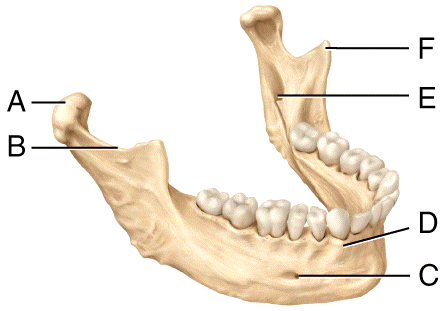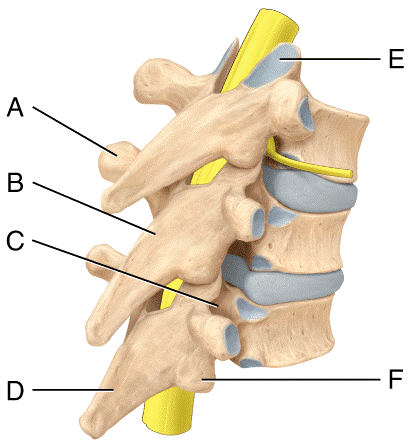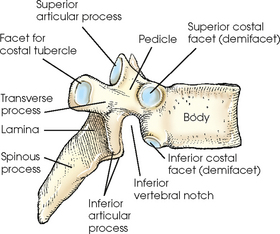Instructions for Side by Side Printing
- Print the notecards
- Fold each page in half along the solid vertical line
- Cut out the notecards by cutting along each horizontal dotted line
- Optional: Glue, tape or staple the ends of each notecard together
Skeletal system lecture exam
front 1 This is a structure of a long bone that stores energy. | back 1 Marrow |
front 2 This is the region of a long bone that articulates with other bones. | back 2 Epiphysis |
front 3 This is the shaft of a long bone. | back 3 Diaphysis |
front 4 This is a layer of hyaline cartilage that reduces friction between bones involved in the joint. | back 4 Articular cartilage |
front 5 This is a layer of hyaline cartilage that allows the Diaphysis to grow in length. | back 5 Epiphyseal plate |
front 6 This is a lining found in bone that promotes bone growth in width. | back 6 Periosteum |
front 7 These are considered bone-dissolving cells. | back 7 Osteoclast |
front 8 Which of the following structures contains osteocytes? | back 8 Lacunae |
front 9 These are considered bone-building cells. | back 9 Osteoblasts |
front 10 These are extensions of the lacunae and are filled with extracellular fluid. | back 10 Canaliculi |
front 11 Osteons in compact bone tissue are aligned along | back 11 Lines of stress |
front 12 The correct sequence of processes that occur during bone elongation at the epiphyseal plate are: RPHCO | back 12 Resting, proliferation, hypertophication, calciifcation, ossification |
front 13 During adulthood, what contributes to bone remodeling and growth? | back 13 Calcium, Vitamin D, sex hormones, human growth hormone |
front 14 This type of fracture is considered a partial fracture and is usually seen in children. | back 14 Greenstick |
front 15  1. Where in the diagram is the distal epiphysis? 2. Where in the diagram can you find the medullary cavity? 3. Where in the diagram can you find red bone marrow in an adult? 4. Where in the diagram is the metaphysis? 5. Where in the diagram is the only place not to have a periosteum? | back 15  1. D 2. C 3. A and B 4. B 5. E |
front 16  1. In the diagram, where is the Haversian canal? 2. In the diagram, where is the Volkman's canal? 3. In the diagram, where is the osteon? 4. In the diagram, where is the trabeculae? | back 16  1. E 2. F 3. C. 4. B |
front 17 The branch of medicine that deals with correction of disorders of the musculoskeletal system is called | back 17 Orthopedics |
front 18 How many bones are found in the adult human skeleton? | back 18 206 |
front 19 What is axial skeleton? | back 19 This includes the skull bones, the ossicles of the middle ear, the hyoid bone, the rib cage, sternum and the vertebral column. |
front 20 Which type of bone is the femur | back 20 A long bone |
front 21 Which type of bone is the occipital? | back 21 A flat bone |
front 22 This is a bone located within ankles or wrists | back 22 A short bone |
front 23 Bones in the following area protect the brain. | back 23 The cranium |
front 24 These projections on either side of the foramen magnum articulate with depressions on the first cervical vertebrae. | back 24 Occipital condyles |
front 25 Joe was found dead. His hyoid bone was broken. What was most likely cause of death? | back 25 Strangulation |
front 26 Know the facial bones | back 26
|
front 27 Which of the following bones is not visible from the anterior view of the skull? | back 27 Occipital |
front 28 This facial bone articulates with teeth | back 28 Maxillae and Mandible |
front 29 What is the junction between the manubrium and the body of the sternum called? | back 29 Sternal angle |
front 30 What is the purpose of the nucleus pulposus | back 30 To absorb vertical shock |
front 31 The curves of the vertebrae include | back 31 Thoracic curve, sacral curve, lumbar curve, cervical curve |
front 32  1. Where is the mental foramen in the diagram? 2. Where is the mandibular notch in the diagram? 3. Where is the coronoid process in the diagram? | back 32 1. C 2. B 3. F |
front 33  1. Where is the inferior articular process in the diagram? 2. In the diagram, where is lamina of the vertebral arch? 3. Where is the spinous process in the diagram? | back 33 1. F 2. B 3. D |
front 34  1. Where is the superior vertebral notch? 2. Where is the facet for articular part of the tubercle of the rib? 3. Where is the pedicle? 4. Where is the superior demifacet? 5. Where is the lamina? | back 34  1. F 2. C 3. I 4. G 5. |
front 35 The lateral malleolus is found on the distal end of what bone? | back 35 Fibula |
front 36 Which is not found in the foot? | back 36 Pollex |
front 37 Which is not a tarsal bone? | back 37 Capitate |
front 38 This is a bone that develops in the tendon of the quadriceps femoris muscle. | back 38 Patella |
front 39 This is the largest foramen in the skeleton | back 39 Obturator foramen |
front 40 Which is found in the elbow? | back 40 Olecranon, Coranoid process, radial head, capitulum, trochlea, olecranon process, |
front 41 What is found in the glenoid cavity? | back 41 Head of the humerus |
front 42 The female pelvis is | back 42 Wider, shallower, larger in the pelvic inlet, and larger in the pelvic outlet |
front 43 This is the anterior bone that articulates with the manubrium of the sternum at the sternoclavicular joint. | back 43 Clavicle |
front 44 This bone's shape comes from the medial half of the bone being convex anteriorly and the lateral half is concave anteriorly. | back 44 Clavicle |